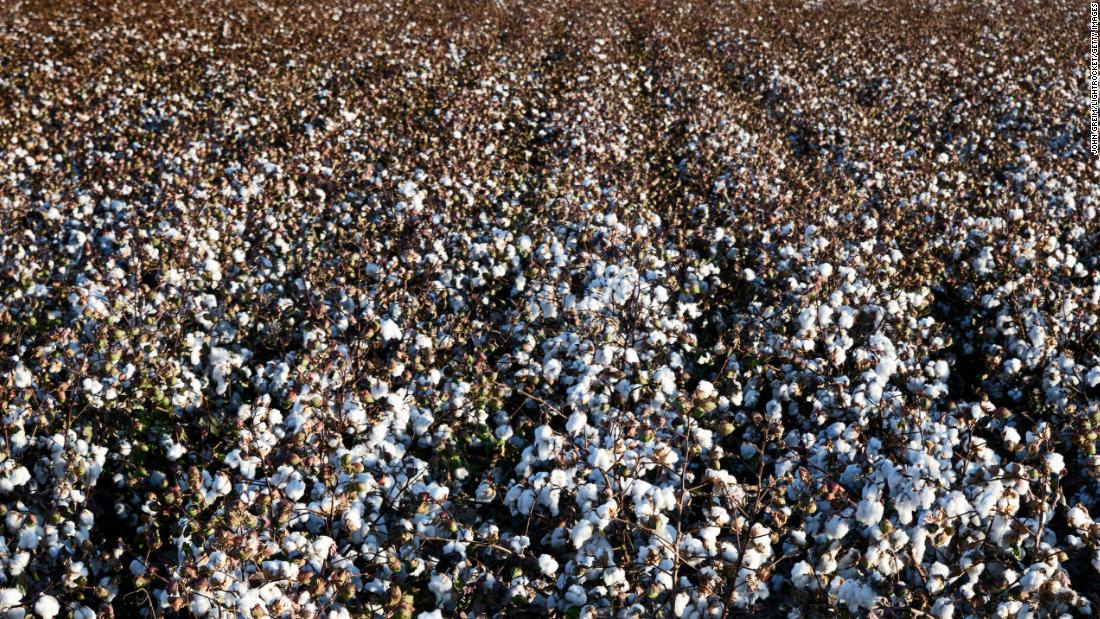Every day final week, cotton futures encountered triple-digit losses, and the December futures contract closed under $1 for the primary time since January. Cotton has now shed greater than a 3rd of its value since early Could. That is unhealthy information for US financial development: America is the biggest exporter of cotton worldwide.
Cotton isn’t alone in its precipitous fall. All commodities have dropped in value, as traders anticipate decrease demand within the close to future as they brace for a doable recession. Crude oil, metals, and different crops have additionally taken a nasty beating in current weeks.
Cotton’s plummet, nevertheless, has been uniquely complicated. Cotton merchandise are largely discretionary, making them rather more inclined to declines in demand throughout financial downturns, and a extreme drought in West Texas is threatening to decimate this 12 months’s cotton crop. However some economists additionally say that the way in which cotton is traded makes it extra inclined to rampant hypothesis and volatility.
Here is why: When textile mills purchase cotton from a service provider, they use what’s referred to as an unfixed on-call contract.
Which means the textile firm, or the mill, will write a contract with a cotton service provider saying they’re going to get a cotton supply in three to 6 months, priced in relation to wherever the July or December futures contract is buying and selling on the time of supply.
In some unspecified time in the future sooner or later, normally when the mill thinks the market value for cotton is as little as it will get, the producer will name the service provider and finalize the contract at that value. Retailers usually promote cotton futures on the New York Intercontinental Change (ICE) once they first signal their contracts to hedge their working margin. They purchase these hedges again when the worth turns into fastened.
However a brand new class of buyer has altered the way in which the market works. Hedge funds and different main monetary gamers have flooded the trade with large cash and numerous hypothesis. Because of this, costs do not at all times match crop fundamentals.
Over the past two years, cotton futures contracts shot as much as file highs, from 48.35 cents per pound in April 2020 to almost $1.60 per pound in April 2022.
A surprisingly fruitful rising season final summer time and a rise in pre-pandemic demand aided that development, stated John Robinson, an agricultural economics professor at Texas A&M College. However a big motive for the large rally was actually simply a rise in market hypothesis.
Now, nevertheless, costs have plummeted. July 2022 Cotton futures closed at $0.99 and December 2022 Cotton futures are at $0.89, and Robinson says he is perplexed by the sudden drop.
“The West Texas crop is decimated, I do not see how anybody may be going brief and I do not perceive why the people who find themselves lengthy can be liquidating now,” he stated.
Managed funds considerably lowered their web lengthy place final week, in line with the Commodity Futures Buying and selling Fee.
Anger about “people who find themselves not concerned in business shopping for or promoting something drop a billion {dollars} and allocate it in line with their formulation,” harkens again to 2008, when cotton markets have been badly harm throughout the Nice Recession, stated Robinson. Now, there is a rising motion amongst cotton producers to alter the way in which ICE futures perform to stop the hypothesis.
Both means, he added, numerous cotton producers in the US are hurting.
The Federal Reserve releases minutes, Wall Avenue yawns
The notes present that members of the Fed are rising anxious about inflation changing into entrenched in the US and are reaffirming their dedication to doing what it takes to chill excessive costs for customers and companies, even when meaning slowing the economic system.
Members hinted that the Fed would in all probability hike charges by one other half level or three-quarters of a degree in its July assembly.
The Fed policymakers “acknowledged the chance that an much more restrictive stance could possibly be applicable if elevated inflation pressures have been to persist,” stated the minutes.
Markets appeared unmoved by the brand new knowledge. Shares rose barely in late-afternoon buying and selling and closed comparatively flat.
“We don’t see a lot meaningfully new info within the minutes,” wrote Bob Miller, BlackRock’s head of Americas basic fastened earnings in a word on Wednesday. The minutes, he stated, have been largely a recap of what merchants already knew, explaining traders’ muted response.
The darkish facet of Purchase Now, Pay Later
Economists and client advocates are involved in regards to the phenomenon. They are saying the rising recognition of those companies, which have little oversight, might imply Individuals are moving into extra debt than is publicly reported.
“Regardless of its speedy development, BNPL has raised pink flags for economists, regulators and attorneys basic. They’ve cautioned that as a result of the companies will not be regulated as credit score merchandise, it has resulted in a Wild West-style market with various phrases and situations and few checks and balances,” writes Wallace.
Up subsequent
Two US labor market studies are due out this morning: ADP’s personal sector US jobs report and the weekly have a look at US unemployment claims.



